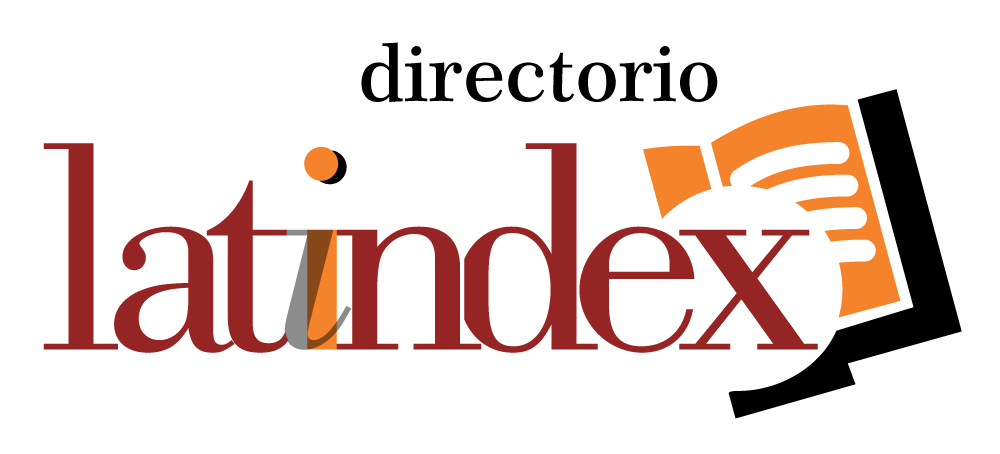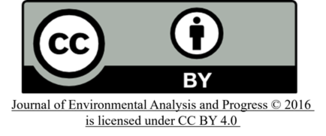Socioeconomic aspects of the production chain of species Cardisoma guanhumi in the Northeast coast of Brazil
DOI:
https://doi.org/10.24221/jeap.4.1.2019.2353.065-070Palavras-chave:
Conservation Unit, Mangrove, Coastal Zone, Traditional CommunitiesResumo
Mangroves are considered an important coastal ecosystem for feeding, protecting and breeding many species. Crustaceans constitute one of the most important groups of mangrove fauna, among the species traded in Brazil, Cardisoma guanhumi (Guaiamum) stands out. In recent years, there has been a decline in the populations of C. guanhumi in Brazil and the species has come to be considered as critically endangered, remaining in this category until today. The species plays an important role in the local ecosystem and social dynamics, the risk of extinction may lead to several negative social and environmental impacts. Aiming at this problem, the research aimed to characterize the socioeconomic representation of this activity. The methodological procedures focused on bibliographical, documentary and cartographic review. For the identification of the flows linked to the production chains, the participant observation technique was used, accompanying the scavengers in their work environments, the transport and commercialization transporters to the final destination. The results point to the identification of two flows (internal and external) that help to understand how the productive chain has been structured. The new modes of production have interfered in the social aspects of the productive chain of the species, being able to accentuate the situation of social vulnerability in which are inserted the social actors that depend on their harvesting. Therefore, it is necessary to create policies and instruments of governance for these territories that aim at planning, planning and environmental management for the regulation of the use of the species considering the aspects of local social dynamics.Downloads
Referências
ALVES, R. R. N; NISHIDA, A. K.; HERNÁNDEZ, M. I. M. Environmental perception of gatherers of the crab'caranguejo-uçá'(Ucides cordatus, Decapoda, Brachyura) affecting their collection attitudes. Journal of Ethnobiology and Ethnomedicine, v. 1, n. 1, p. 10, 2005.
BRASIL, Portaria Interministerial N° 38, de 26 de julho de 2018. Define regras para o uso sustentável e para a recuperação dos estoques da espécie (Guaiamum, goiamú, caranguejo-azul, caraguejo-do-mato). Diário Oficial da União. Brasília, DF, ed. 144, p. 3, 2018.
BRANCO, J. O. Aspectos ecológicos de Brachyura (Crustáceos: Decapoda) no manguezal do Itacorubi, SC, Brasil. Revista Brasileira de Zoologia, 7: 165-179. 1990.
COELHO, P. A.; BATISTA-LEITE, L. M. A.; SANTOS, M. A. C.; TORRES, M. F. A. O manguezal. In: Eskinazi-Leça, E.; Neumann-Leitão, S. & Costa, M. F. (eds). Oceanografia: Um cenário tropical. Bagaço, Recife, Brasil, p.641-688. 2004.
DIEGUES, A.C.S. Pescadores, camponeses e trabalhadores do mar. Ed. Ática, SP, 279p, 1983.
FAO. Voluntary Guidelines for Securing Sustainable Small-Scale Fisheries. Food and Agriculture Organization of the United Nations. 34 p., Rome, 2015.
GLASER, M. & DIELE, K. Asymmetric outcomes: assessing central aspects of the biological, economic and social sustainability of a mangrove crab fishery, Ucides cordatus (Ocypodidae), in North Brazil. Ecological Economics, 49: 361-373. 2004.
KNOX, W. & TRIGUEIRO, A. “Saberes, Narrativas e Conflitos na Pesca Artesanal”, Vitoria, EDUFES, 2015. 229 p.
LEITE, L. M. A. B. Estudo Etnocarcinológico do Cardisoma guanhumi Latreille, 1825 (Crustácea, Brachyura, Gecarcinidae) no Estuário do rio Gioana, Pernambuco, Brasil. Tese de Doutorado. Universidade Federal da Paraíba, p. 120, 2005.
LIMA, A. C. C.; CALLOU, A. B. F. Políticas públicas e assistência técnica para pesca artesanal em Pernambuco. Contexto & Educação, v.30, n. 95, 2015.
MANESCHY, M. C. Pescadores nos manguezais: estratégias técnicas e relações sociais de produção na captura de caranguejo. In: Furtado, L. G.; Leitão, W. & Mello, A. F. (org.). Povos das águas: realidade e perspectiva na Amazônia. Belém: Museu Paraense Emílio Goeldi. Pp. 19-62. 1993.
MMA. Ministério do Meio Ambiente. Lista Nacional Oficial de Espécies da Fauna Ameaçadas de Extinção - Peixes e Invertebrados Aquáticos. Portaria MMA nº 445. Diário Oficial. Brasília, 18 de dezembro de 2014, Nº 245, Seção 1:p 110
MINAYO, M.C.S. (Org.) Pesquisa Social: teoria, método e criatividade. Petrópolis, RJ: Vozes, 28ª edição. 2009.
NORDI, N. Os catadores de caranguejo-uçá (Ucides cordatus) da região de Várzea Nova (PB): uma abordagem ecológica e social. Tese de Doutorado. São Carlos: UFSCAR. 1992.
PORTUGAL, A.D. A importância estratégica da prospecção tecnológica para o SNPA. In: CASTRO, A.M.G.; LIMA, S.M.V.; GOEDERT, W.J.; FILHO, A.F.; VASCONCELOS, J.R.P. Cadeias produtivas e sistemas naturais: Prospecção tecnológica. Brasília. Embrapa – SPI/ Embrapa – DPD. 1998. 564p.
SCHAEFFER-NOVELLI, Y. Manguezal: Ecossistema entre a Terra e o Mar. São Paulo: Caribbean Ecological Research, 1995.
SCHAEFFER-NOVELLI, Y. & CINTRÓN-MOLERO, G. Manguezal: Conservação e restauração, um conceito de manejo. VIII Congresso Latinoamericano sobre Ciências Del Mar, Trujillo, Peru. 1999.
SOARES, M. L. G. Estudo de biomassa aérea de manguezais do sudeste do Brasil - Análise de modelos. Tese Doutorado. Universidade de São Paulo, Instituto Oceanográfico. 1997.
OLIVEIRA, L. P. H. Estudos ecológicos dos crustáceos comestíveis uçá e guaiamú, Cardisoma guanhum Latreille e Ucides cordatu (L). Gecarcinidae, Brachyura. Memórias do Instituto Oswaldo Cruz, 44: 123-143. 1946.
Downloads
Publicado
Como Citar
Edição
Seção
Licença
Material protegido por direitos autorais e plágio. No caso de material com direitos autorais ser reproduzido no manuscrito, a atribuição integral deve ser informada no texto; um documento comprobatório de autorização deve ser enviado para a Comissão Editorial como documento suplementar. É da responsabilidade dos autores, não do JEAP ou dos editores ou revisores, informar, no artigo, a autoria de textos, dados, figuras, imagens e/ou mapas publicados anteriormente em outro lugar. Se existir alguma suspeita sobre a originalidade do material, a Comissão Editorial pode verificar o manuscrito por plágio. Nos casos em que trechos já publicados em outro documento for confirmado, o manuscrito será devolvido sem revisão adicional e sem a possibilidade de nova submissão. Autoplágio (ou seja, o uso de frases idênticas de documentos publicados anteriormente pelo mesmo autor) também não é aceitável.
Direitos autorais: Autor
Material protected by copyright and plagiarism rights. In the case of copyrighted material being reproduced in a manuscript, full attribution should be informed in the text; an authorization document is proving to be sent to the Editorial Board as a supplementary document. It is the responsibility of the authors, not JEAP or editors or reviewers, to inform, in the article, the authors of texts, data, graphics, images and maps previously published elsewhere. If there is any suspicion about the originality of the material, the Editorial Board can check the manuscript for plagiarism. Where plagiarism is confirmed, the document will be returned without further review and the possibility of a new submission. Self-plagiarism (i.e., the use of the same phrases previously published documents by any of the authors) is not acceptable.
Copyright: Author






